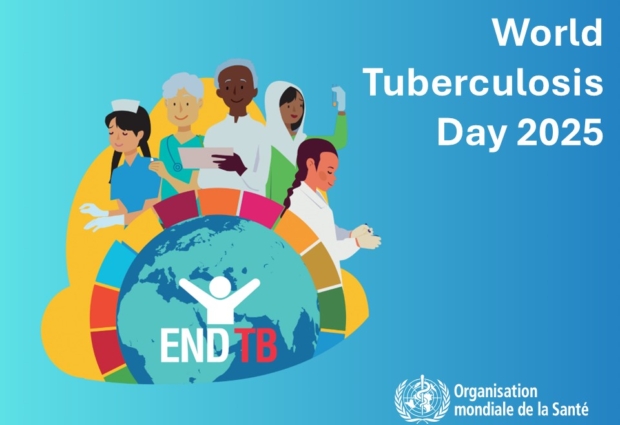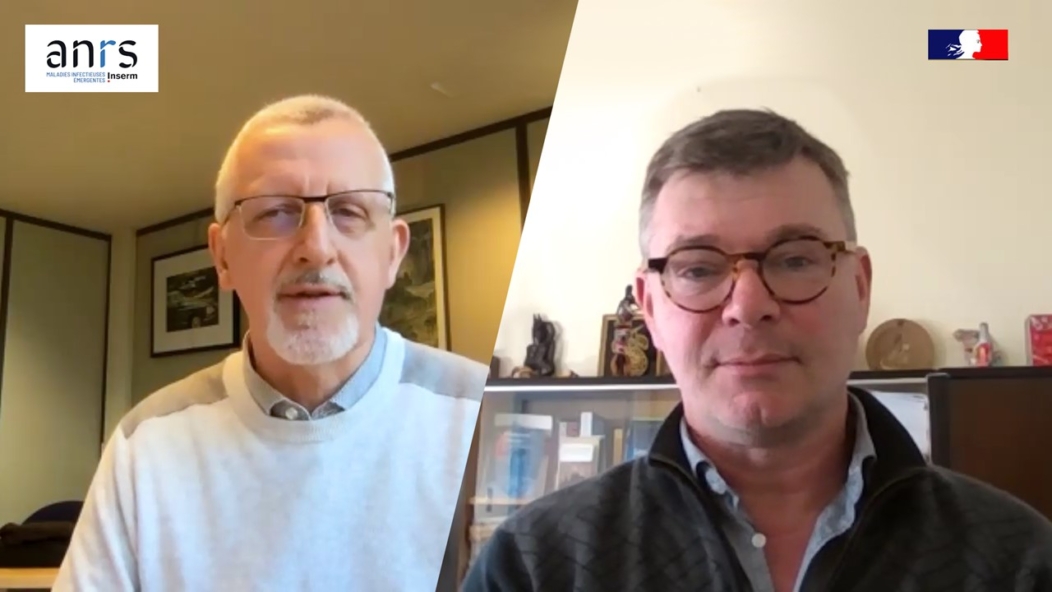
World tuberculosis Day 2025
Celebrated every year on 24 March.
Last updated on 24 March 2025
The theme of World tuberculosis (TB) Day 2025
This year’s theme, “Yes, we can end TB: Commit, Invest, Deliver“, is a bold call for hope, urgency, and accountability, as tuberculosis continues to destroy the lives of millions of people around the world.
The impact of tuberculosis
Tuberculosis on the rise again
The World Health Organization (WHO) has published a new report on tuberculosis, indicating that around 8.2 million new cases of the disease were diagnosed in 2023, the highest number recorded since the WHO began monitoring tuberculosis worldwide in 1995.
Although the number of deaths linked to tuberculosis has fallen, from 1.32 million in 2022 to 1.25 million in 2023, tuberculosis remains one of the infectious diseases that cause the most deaths in the world. Every day, almost 3,425 people die from tuberculosis and almost 30,000 people fall ill from this preventable and curable disease.
Improved access to diagnosis and treatment, but remains insufficient
It is estimated that global efforts to combat tuberculosis have saved 79 million lives since 2000.
In its latest Global Tuberculosis Report, WHO highlighted that more than 8.2 million people with TB received access to diagnosis and treatment in 2023, more than the 7.5 million in 2022, and far above the levels of 5.8 million in 2020 and 6.4 million in 2021. Globally, there is still a large global gap between the estimated number of people who fell ill with TB and the number of people newly diagnosed.
ANRS MIE’s commitment to the fight against tuberculosis
To guarantee progress in reducing the morbidity and mortality of tuberculosis, it is necessary to maintain sufficient levels of Funding over many years. The ANRS MIE is committed to fighting tuberculosis by funding research projects and leading Coordinated action groups made up of experts in the field.
Scientific facilitation
Read the interview with Olivier Neyrolles and François-Xavier Blanc, co-chairs of the Coordinated Action on tuberculosis, a group of multidisciplinary experts from ANRS MIE working on tuberculosis research.
Research projects on tuberculosis
The ANRS MIE and the SAMRC have launched a joint call for proposals to strengthen tuberculosis research by promoting collaboration between South African and French researchers. Launched in August 2024, it received 20 applications covering five research priorities. Five projects were selected for funding, focusing on messenger RNA vaccine strategies, artificial intelligence assessment of TB, individualised therapies, new screening techniques and cost-effective case-finding methods.
Discover the laureates More on SAMRCTo celebrate this world day, ANRS MIE is also presenting some of the major work in progress, particularly on the management of tuberculous meningitis. Read the interview below with Dr Alain Baulard, Doctor of Molecular Biology and Inserm Research Director at the Lille Centre for Infection and Immunity, and Professor Fabrice Bonnet, Bordeaux University Hospital.
Interview with Dr Alain Baulard and Prof Fabrice Bonnet
Why work on tuberculous meningitis?
Fabrice Bonnet. Tuberculous meningitis affects 180,000 to 200,000 people a year worldwide. Tuberculous meningitis is the most lethal form of tuberculosis, with a mortality rate of between 30% and 40%. It particularly affects the most vulnerable and immunocompromised populations.
How can the prognosis of tuberculous meningitis be improved?
Fabrice Bonnet ANRS MIE is particularly involved in this issue, as it is sponsoring and funding two clinical trials dedicated to tuberculous meningitis. The TIMPANI trial is exploring the addition of adalimumab to modulate anti-inflammatory activity, while the INTENSE TBM trial is evaluating the effect of aspirin addition to the treatment regimen.
Other avenues of treatment include optimising supportive care, with better management of hyponatremia, convulsions and malnutrition. Intensification of antibiotic therapy is also essential. To this end, research is focusing on improving the speed of bactericidal action and disseminating treatments to extrapulmonary compartments, particularly the central nervous system.
What is a pro-antibiotic?
Alain Baulard. They are called pro-antibiotics because these molecules must first penetrate the bacteria in order to be activated by them. Once activated, they become fully effective and destroy the bacteria. It’s a bit like buying a cell phone: one should provide a SIM card to active it. The phone is the antibiotic and it’s the bacteria that provide the SIM card needed to activate it.
Our teams at the Institut Pasteur Lille and the University of Lille have joined with private pharmaceutical partners to develop a new concept. The idea is to strengthen the activation stage of the antibiotic to make it more powerful. To use the cell phone analogy again, it’s as if we were going from a 4G connection to 5G by changing the SIM card. We are now the ones supplying the SIM card to the bacteria. This card is called alpibectir. It’s a small molecule that enables the bacteria to super-activate ethionamide, a powerful antibiotic. Result: the bacteria are eliminated more quickly and more effectively.
How can pro-antibiotics improve the management of tuberculous meningitis?
Fabrice Bonnet. The increase intracellular antibiotic activity provided by the boost of alpibectir over ethionamide will, we hope, enable us to increase the antibiotic activity and therefore the prognosis of tuberculous meningitis. We are therefore setting up a phase II trial, funded by ANRS MIE, to assess the pharmacokinetics and pharmacodynamics of alpibectir and ethionamide in tuberculous meningitis. The trial will take place in three countries – Madagascar, Côte d’Ivoire and Zambia – where tuberculosis meningitis rates are particularly high.
This project is a perfect example of a translational project from the lab to clinical trials, led by French tuberculosis teams and supported by ANRS MIE.
How did this collaboration on tuberculous meningitis come about?
Alain Baulard. We met with Professor Fabrice Bonnet at an event from the concerted action on tuberculosis at ANRS MIE. That’s when we started talking about the problemematic of antibiotic therapy in tuberculous meningitis, a field I knew nothing about at the time.
It was a real discovery for me: ethionamide, a compound formerly used in the treatment of tubercular meningitis, had been gradually left aside because of its toxicity. Fabrice Bonnet then explained to me that it was nevertheless an effective antibiotic and that it would be interesting to reintroduce it in the treatment of the disease.
In our work on pulmonary tuberculosis, we were in fact developing an approach combining ethionamide with alpibectir, making it possible to reduce the dose of ethionamide required and thus limit its toxic effects. During our discussions, it became clear to us that this strategy deserved to be explored in the context of tuberculous meningitis, especially as we already knew that alpibectir, like ethionamide, had an excellent capacity to penetrate the meningeal barrier. That’s how our collaboration began.
To find out more
- On the WHO report
The WHO Global tuberculosis report 2024 https://www.who.int/publications/i/item/9789240101531
- Tuberculous meningitis
- Improving the effectiveness of ethionamide
Grosse, Camille, Maud Sigoillot, Véronique Megalizzi, Abdalkarim Tanina, Nicolas Willand, Alain R Baulard, and René Wintjens. 2024. “Crystal Structure of the Mycobacterium Tuberculosis VirS Regulator Reveals Its Interaction with the Lead Compound SMARt751.” Journal of Structural Biology 216 (2): 108090. https://doi.org/10.1016/j.jsb.2024.108090.
Flipo, Marion, Rosangela Frita, Marilyne Bourotte, María S. Martínez-Martínez, Markus Boesche, Gary W. Boyle, Geo Derimanov, et al. 2022. “The Small-Molecule SMARt751 Reverses Mycobacterium Tuberculosis Resistance to Ethionamide in Acute and Chronic Mouse Models of Tuberculosis.” Science Translational Medicine 14 (643).https://doi.org/10.1126/scitranslmed.aaz6280.


